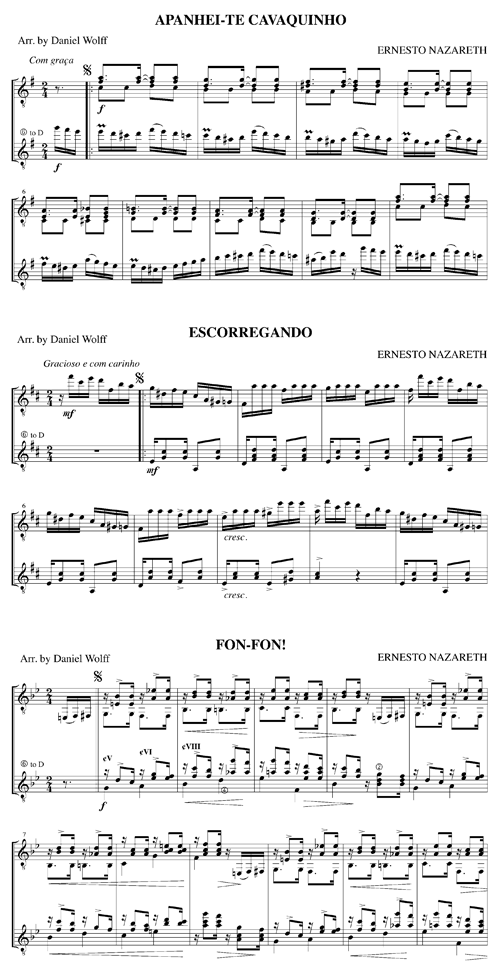

"Chorando na Garoa - Memórias Musicais de São Paulo". AMARAL JÚNIOR, José de Almeida (2013)."Choro Conversations: Pursuing Life, Love and Brazil's Musical Identity," - Fremont, California: Global Choro Music. Os Sorrisos do Choro: Uma Jornada Musical Através de Caminhos Cruzados. Bloomington, Indiana: Indiana University Press. Choro: A Social History of a Brazilian Popular Music. Livingston-Isenhour, T., and Garcia, T.1 to 14" (Concert music inspired in Choro, by Heitor Villa-Lobos) "Meu amigo Radamés" ( Antonio Carlos Jobim)."Meu caro amigo" ( Chico Buarque e Francis Hime)." Tico-Tico no Fubá" ( Zequinha de Abreu)."Apanhei-te Cavaquinho" ( Ernesto Nazareth).Īccording to Aquiles Rique Reis (a Brazilian singer), ”Choro is classical music played with bare feet and callus on the hands” Notable choro compositions The French composer Darius Milhaud was enchanted by choro when he lived in Brazil (in 1917) and he composed the ballet Le Boeuf sur le toit, in which he quotes close to 30 Brazilian tunes. Notably, both composers had some of their music inspired by choro, bringing it to the classical tradition. Heitor Villa-Lobos defined choro as the true incarnation of Brazilian soul. Radamés Gnattali said it was the most sophisticated instrumental popular music in the world. Most Brazilian classical composers recognize the sophistication of choro and its major importance in Brazilian instrumental music. More recently, choro has attracted the attention of musicians in the United States, such as Mike Marshall and Maurita Murphy Mead, who have brought this kind of music to a new audience. Thanks in great part to these efforts, choro music remains strong in Brazil.
#Apanhei te cavaquinho flute professional#
In the late 1970s there was a successful effort to revitalize the genre in the mainstream, through TV-sponsored nationwide festivals in 19, which attracted a new, younger generation of professional musicians. By the 1950s and 1960s it was replaced by urban samba in radio, but was still alive in amateur circles called "rodas de choro" (choro gatherings in residences and botecos), the one most famous was the "roda de choro" in the house of Jacob do Bandolim, in Jacarepaguá, and the "roda de choro" in the pub "suvaco de cobra" in the Penha. Much of the mainstream success (by the 1930s to 1940s) of this style of music came from the early days of radio, when bands performed live on the air. By the 1910s, many of the first Brazilian phonograph records are choros. In the beginning (by the 1880s to 1920s), the success of choro came from informal groups of friends (principally workers of postal/telegraphic service and railway ) which played in parties, pubs ( botecos), streets, home balls (forrobodós), and also the big hits of Ernesto Nazareth, Chiquinha Gonzaga and other pianists, whose musical scores were published by print houses. Just like ragtime in the United States, tango in Argentina and habanera in Cuba, choro springs up as a result of influences of musical styles and rhythms coming from Europe and Africa. Various genres were incorporated as subgenres of choro such as "choro-polca", "choro-lundu", "choro-xote" (from schottische), "choro-mazurca", "choro-valsa" (waltz), "choro-maxixe", " samba-choro", "choro baião". The accompanying music of the Maxixe (dance) (also called "tango brasileiro") was played by these choro ensembles. in the 1870s flutist Joaquim Antônio da Silva Callado formed an ensemble called "Choro Carioca", with flute, two guitars and cavaquinho), and later the term referred to the music genre of these ensembles. The term “choro” was used informally at first to refer to the style of playing, or a particular instrumental ensemble, (e.g. In the 19th century, choro resulted from the style of playing several musical genres ( polka, schottische, waltz, mazurka and habanera) by carioca musicians, who were already strongly influenced by African rhythms, principally the lundu and the batuque. Problems playing this file? See media help. Played by Pixinguinha (saxophone) and Benedito Lacerda (flute).

David Jolley.Choro "1 x 0" (ou "Um a zero"), composed by Pixinguinha and Benedito Lacerda. I got rhythm Liza Fascinatin 'rhythm / Earl Wild arr. Quintette en forme de choros / Heitor Villa-Lobos. Odeon Apanhei-te, cavaquinho Tico-Tico / Ernesto Nazareth, Zequinha de Abreu arr. Kleine Kammermusik für fünf Bläser : op. Overture Salomon-song Ballad of gracious living Song of the insufficiency of human endeavor Ballad of Mack the Knife / Kurt Weill arr. Yes, I'm in the barrel / Louis Armstrong arr. Borden Auditorium, Manhattan School of Music, September 26, 2005. Kay, clarinet Frank Morelli, bassoon David Jolley, horn). Windscape (Tara Helen O'Connor, flute Randall Ellis, oboe Alan R.


 0 kommentar(er)
0 kommentar(er)
